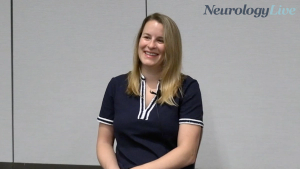|Videos|April 16, 2021
The Changing Landscape in the Treatment of Spinal Muscular Atrophy
Crystal Proud, MD; Claudia Chiriboga, MD, MPH; Tom Crawford, MD; Basil Darras, MD; and Carolina Tesi Rocha, MD provide a discussion on the importance of early diagnosis and treatment of spinal muscular atrophy and consider data from recent clinical trials of disease-modifying therapy options.
Advertisement
Newsletter
Keep your finger on the pulse of neurology—subscribe to NeurologyLive for expert interviews, new data, and breakthrough treatment updates.
Advertisement
Related Articles
 Current Challenges and New Opportunities Ahead for Women in Neurology
Current Challenges and New Opportunities Ahead for Women in NeurologySeptember 15th 2025
 2025 Women in Neurology Conference: Educating, Mentoring, and Networking
2025 Women in Neurology Conference: Educating, Mentoring, and NetworkingSeptember 15th 2025
Latest CME
Advertisement
Advertisement
Trending on NeurologyLive
1
Del-Zota Reverses Duchenne Disease Progression in 1-Year Trial Update
2
EMA Approves Semaglutide as First GLP-1 RA for Cardiovascular, Stroke-Related Benefits
3
Evolving Responsibilities of Vice Chairs in Neurology Leadership: Mud Alvi, MD
4
Current Challenges and New Opportunities Ahead for Women in Neurology
5










































